Biodynamic Vineyard Management
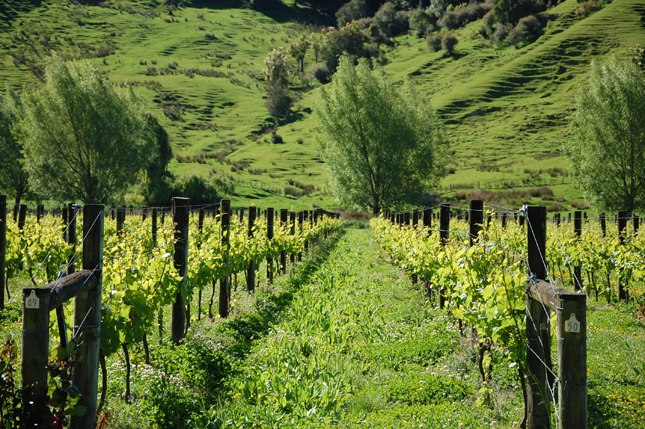
No one can predict where an idea will come from or who will produce one that alters the way the world operates. Oftentimes ideas, modifications or inventions come from the most unlikely places or spring from the minds of those who are sometimes perceived as living on the fringe of creditability. Many of the ideas that arrive from “left field” usually take a lot longer to grasp or are met with such topical resistance that it takes a generation or more to shake the groupthink and move forward.
Is one of those ideas Biodynamic farming?
The father of Biodynamics is Rudolf Steiner (1861-1925). If there’s ever been a thinker to push the bounds of credibility it is this guy. Trained in philosophy and mathematics Steiner’s interests ranged farther afield. In his life he devoted a great deal of thought to astronomy, concluding that the Sun was created by the Earth; to anatomy, believing that the heart is not a pump but a “dam-like organ;” to evolution, determining that the humans of prehistory were single sexed that divided into two sexes so that we could become “thinking creatures.”
Another subject Steiner devoted a lot of scientific thought to was agricultural. In 1924 a group of farmers had determined that the degraded soil conditions and the failing health of their livestock was directly attributable to the use of chemical fertilizers. These chemicals were supposed to have been the savior substances that would maximize yields, end hunger, produce the giant peach, etc. The concerned farmers approached Steiner and asked his opinion on what was to be done. Steiner put together eight lectures on the subject that he delivered in Koberwitz, Germany in 1924. From these lectures came the founding principles of Biodynamic farming.
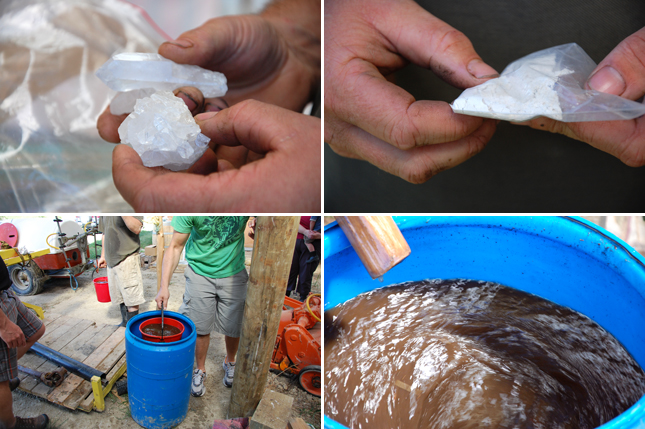
Some view Biodynamic farming methods as a bunch of hooey, or, to put in the words used by an anonymous farmer, “A bunch of nutty hippie s**t.” The tenets of Biodynamism maintain that the land is a unified entity or organism that works in relation with the entire Earth/Organism and outward into the cosmos. In less grandiloquent terms, practitioners of Biodynamic farming, sensitive to cosmic spirits or not, react to the precise observations or natural events that take place on their land. Careful observation of how light travels over their fields throughout the seasons, where water collects or drains, what types of insects inhabit certain kinds of plants, etc., are recorded and responded to. Over the decades participants in the Biodynamic movement, as those in the Organic, have shared their observations to the benefit of others.
Additionally, Biodynamic farming sees the soil, not just water and light, as equally integral to the support of plant life; going so far as to assert that the dirt is alive and like other living organisms it reacts to the changes in the seasons, diurnal shifts and atmospheric/celestial events. By understanding the effects of these rhythms, farmers can prepare their soils and determine when sowing, cultivating and harvesting can take place to the advantage of their crops.
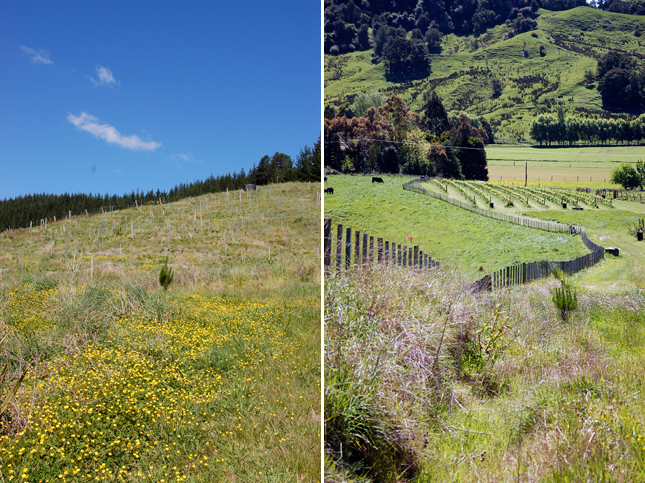
The Biodynamic view, like most Organic methods, differs from commercial, chemical-based or “industrialized” farming in other, less quasi-spiritual ways. Chemical farming has developed alternative cultivation methods designed to speed up the process or to increase size and yields. While in theory there is nothing wrong with this or unethical there may be generational risks being taken. The addition of soluble minerals and other known toxins into the soil taken in by plants through water circumvents a plant’s “instinctual” drive to take also from the soil, air and light what it needs for survival. This partial diet results in artificial results. In turn, humans consume these foods raised in artificial environments and receive only a fraction of the food’s true and much needed nutritional value. Consuming “vital” food stimulates our own activity and improves our quality of life and perhaps even our health.
Presently there are about 50 nations that practice Biodynamic farming, India and Germany being the most active. To become certified Biodynamic is a minimum three year process. Some of the requirements to get Biodynamic certification are: farms must be free of synthetic pesticides and fertilizers. (This is true of an Organic farm as well.) Like Organic farms a Biodynamic farm must first meet the same 3-year transition period that the National Organic Program (NOP) and the International Standards Organization 65 (or the EN 45011 in Europe) demand. Lastly, certification examiners from Demeter Worldwide or Demeter USA visit each farm and assess the land recognizing that each place has its own inherent environmental and social conditions.
One more major difference between Biodynamic and Organic is that Biodynamic farms attempts to “cure” an ailing environment while Organic attempts to reduce or eliminate the use of harmful agricultural practices. All Biodynamic farms also strive to be self-sustaining.
Two practitioners of the Biodynamic method in New Zealand are Geoff and Nicola Wright. Together they produce red and white wines and olive oil on their 30 acre vineyard and olive orchard just outside of Gisborne, New Zealand in the township of Ormond.
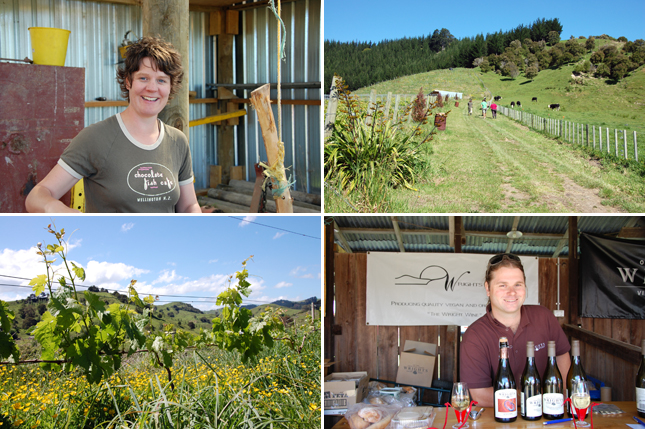
Here in the southern hemisphere it is spring and today the Wrights are busy making a soil preparation called “500.” As they have done for the last few springs they have followed this precise recipe of ground cow horn, manure, organic matter and water to spray on their vineyard. There are eight such preparations (500 through 508) used in biodynamic farming. Their purposes vary but 500 and 501 are soil treatments while 502 - 508 are compost treatments. Their components and purposes are as follows:
500: Horn-manure. A humus mixture prepared by filling a cow horn with cow manure and burying it in the ground in the fall. Over winter the horn decomposes. In spring it is recovered for use when the earth-softened horn/manure is ground and mixed with organic matter. It is used to promote root growth.
501: Crushed quartz. This is prepared by stuffing powdered quartz into a horn of a cow and buried into the ground in spring and dug out in autumn. It can be mixed with 500 but usually prepared on its own (mixture of 1 tablespoon of quartz powder to 250 liters of water.) The mixture is sprayed under very low pressure over the crop during the wet season to prevent fungal diseases. The refractory properties of the ground crystal are also said to stimulate photosynthesis.
Each of the following preparations is designed to produce a particular type of decomposition process in the composting mass. These treated compost preparations are applied to crops when planetary positioning is optimal. Biodynamic farmers use the Stella Natura calendar to keep track of the celestial movements. It is thought that at certain times the soil is more open and able to receive treatments.
502: Yarrow blossoms are stuffed into the bladders from Red Deer, dried in the sun buried in winter and retrieved in spring.
503: Chamomile blossoms are stuffed into the small intestines of a cow, buried in humus-rich earth in the autumn and retrieved in the spring.
504: Stinging nettle plants in are stuffed underground with peat for a year.
505: Oak bark pieces are placed inside the skull of a domesticated animal, surrounded by peat and buried in rain soaked earth.
506: Dandelion flowers are stuffed into the peritoneum or abdominal membrane of a cow and buried during winter and retrieved in the spring.
507: Valerian flowers “tea.”
508: Horsetail or Casuarina “tea.”
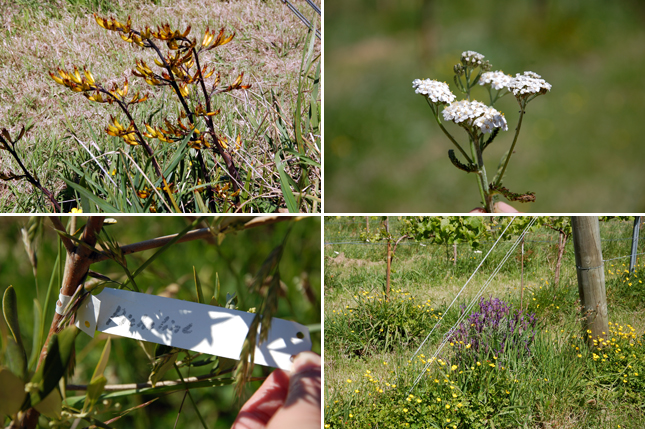
The ingredients that go into these soil and compost preparations may seem a little odd. If not odd at least difficult to prepare, after all, who keeps a supply of Red Deer bladders laying around? These preparations do have a basis in science. For example, the manure in the cow horn (the “500”) decomposes over the winter and enzymes are released from the decaying bone that leach into the manure that become a breeding ground for beneficial microorganisms. When the horn/manure is dug up, crushed then mixed in water these organisms activate and multiply. (As the “500” soil preparation was being made we observed a dramatic visible and aromatic change in the liquid.) When this preparation is applied to the soil these activated organisms and enzymes go to work and assist in the restoration of the Ph balance and enable beneficial bacteria to flourish.
Despite the hocus-pocus aspect that some people think is at the heart of Biodynamic farming it is not an either/or method. Throughout much of Germany, where Biodynamic farming is rapidly gaining ground, and in other locations, farmers are operating within the spirit or intent of the ideology rather than the strict, letter of the law. “It’s like religion,” says Geoff Wright, “Oftentimes it doesn’t make sense, really. It’s all a leap of faith.”
Studies of Biodynamic farms have shown that the soil health on microbial, biological and structural levels are much better than on organic or conventional farms. This has been attributed to the use of the variously treated composts. However, yield and earning statistics are negligible. Most studies report that the benefits of Biodynamic farming in terms of yield and income are generally neutral. A 21-year Swiss study conducted by a governmental agency compared the performance of biodynamic, organic and two conventional farms and found that nutrient input in the biodynamic and organic systems was 34 to 51% lower than in the conventional systems. Crop yield was only 20% lower on average, indicating more efficient production. (Superficially, this statistic sounds a bit disheartening but when one considers the supernatural performance of chemical fertilizers and pesticides used on industrial farms vs. what is used on a biodynamic farm the comparison is analogous to conducting a home run hitting contest between a steroid-pumped Major leaguer vs. a high school baseball player.)
While Biodynamic farming has not proven itself to be the panacea of our time it does offer an alternative method of working the land. One that reuses most farm waste, one that has a very low impact on the environment, one that is chemical free and that provides an economical way of farming in which operating costs are slashed. To some Biodynamic farming is viewed as a solution to conflicts between corporate farming conglomerations and environmentalists and offers an alternative business model that is more localized and cost effective than the present, mostly globalized model.
To the Wrights, and farmers and vintners like them, the choice to go Biodynamic was more than just a philosophical, economic or spiritual one. “It’s interesting because you get to know your land,” says Geoff, “you can feel the life in it.”
Geoff Wright discusses the fundamentals of Biodynamic farming.
Wrights Vineyard Winery is located in Gisborne, New Zealand.






 Share Article
Share Article
Reader Comments (9)
Wonderful post! My husband's family is very involved in the Steiner Waldorf Schools. I have learned a lot in the last few years about his approach to life and farming...biodynamics. Nearly all of my favorite wineries in Northern California practice biodynamics. Thanks for such an informative post.
Fascinating post... New Zealand is a dynamic center of modern farming and gardening. Many of their farms are years ahead of ours in the US, using organic and permaculture techniques. This is the first I've heard of the term "biodynamic," but it sounds like a great way to tread more lightly. You've inspired me to look into it! Thanks for sharing!
Amazing. It's always inspiring to see people really get into the whole process of something like this!
Excellent post on biodynamic farming. You provided a good introduction into a subject that is shrouded in more than a little mysticism. Great coverage of both the proponents and the opponents of the method.
gosh..this is so inspiring. Wish I can move back to countryside. Maybe when I retire. I love New Zealand, always the place that I want to go...extraordinary sceneries.
biodynamics has fascinated me since I first heard about it several years ago during a tour at benzinger vineyards in glen ellen, sonoma county...they have planted an insectarium within their vineyards with specific plants that attract beneficial insects and, by extension, birds & other creatures that naturally eliminate threats to the vines, which in turn eliminates the need for artificial measures for pest eradication. as a consumer, this resonates with me...i'm willing to pay a premium for products that are free from pestisides & other forms of artificial manipulation as I feel they are better for me as well as for the earth as well as tasting just as good if not better than similar non-biodynamic or organic products. however, it is like anything else, such as religion or politics, that can be taken to extremes...there is a point of diminishing returns, or maybe it's just a point where I have a hard time suspending my disbelief...I guess it's the midwest in me that wants to call bull*hit at a certain point. all that being said, I totally respect the beliefs & the choice to take it to those extremes if they believe it will produce a better wine...however, I will exercise the right to say "uncle" at a certain point. Cool stuff, thanks for taking the time to research & educate on this provocative and relatively new topic.
very beutiful website,amber!i learned a lot from every word and picture!congrats!and thanks for the visit and comment to my website dedicated to my son !
Great post, I loved this and learned to appreciate all the more what folks are doing in CA. Thanks so much for sharing